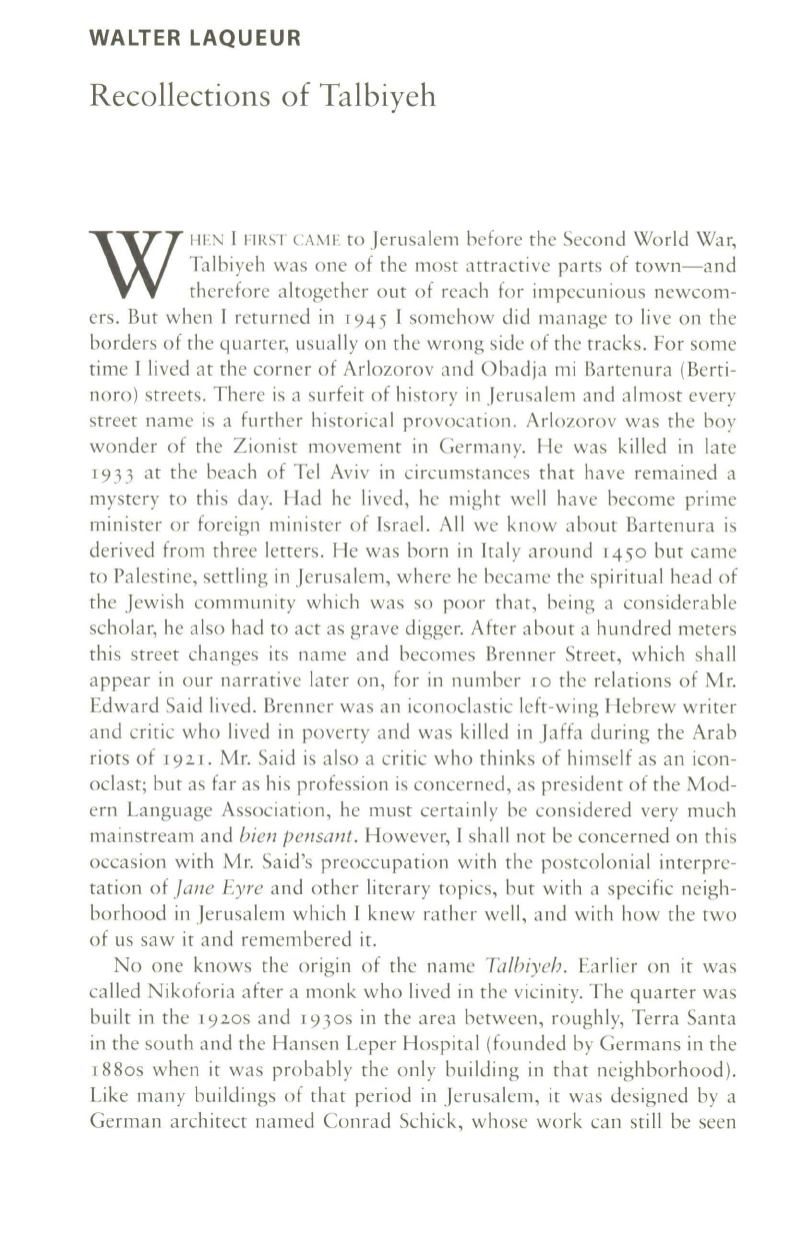
WALTER LAQUEUR
Recollections of Talbiyeh
W
HEN
I
FIRST CMIE
to Jerusalem before the Second World War,
Talbiyeh was one of the most attractive parts of town-and
therefore altogether out of reach for impecunious newcom–
ers. But when I returned in 1945 I somehow did manage to live on the
borders of the quarter, usually on the wrong side of th e tracks. For some
time I lived at the corner of Arlozorov and Obadja mi Bartenura (Berti–
noro) streets. There is a surfeit of history in Jerusal em and almost every
street name is a further historical provocation . Arlozorov was the boy
wonder of the Zionist movement in Germany. He was killed in late
1933 at the beach of Tel Aviv in circumstances that have remained a
mystery to this day. Had he lived, he might well have become prime
minister or foreign minister of Israel. All we know about Bartenura is
derived from three letters. He was born in Italy around 1450 but came
to Palestine, settling in Jerusalem, where he became the spiritual head of
the Jewish community which was so poor that, being a considerable
scholar, he also had to act as grave digger. After about a hundred meters
this street changes its name and becomes Brenner Street, which shall
appear in our narrative later on, for in number 10 the relations of Mr.
Edward Said lived. Brenner was an iconoclastic left-wing Hebrew writer
and critic who lived in poverty and was killed in Jaffa during the Arab
riots of 1921. Mr. Said is also a critic who thinks of himself as an icon–
oclast; but as far as his profession is concerned, as president of the Mod–
ern Language Association, he must certainly be considered very much
mainstream and
bien pellsant.
However, I shall not be concerned on this
occasion with Mr. Said's preoccupation with the postcolonial interpre–
tation of
Jane Eyre
and other literary topics, but with a specific neigh–
borhood in Jerusalem which I knew rather well, and with how the two
of us saw it and remembered it.
No one knows the origin of the name
Talhiyeh.
Earlier on it was
called Nikoforia after a monk who lived in the vicinity. The quarter was
built in the 1920S and r930s in the area between, roughly, Terra Santa
in the south and the Hansen Leper Hospital (founded by Germans in the
1880s when it was probably the only building in that neighborhood ).
Like many buildings of that period in Jerusalem, it was designed by a
German architect named Conrad Schick, whose work can still be seen


